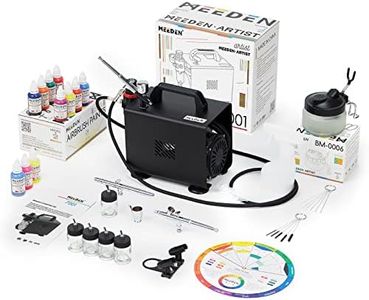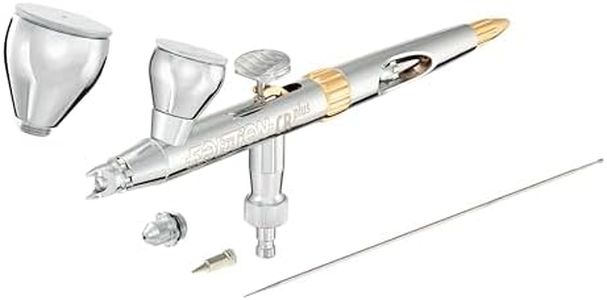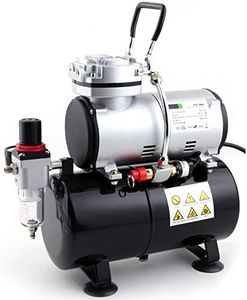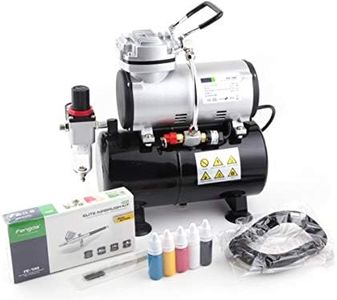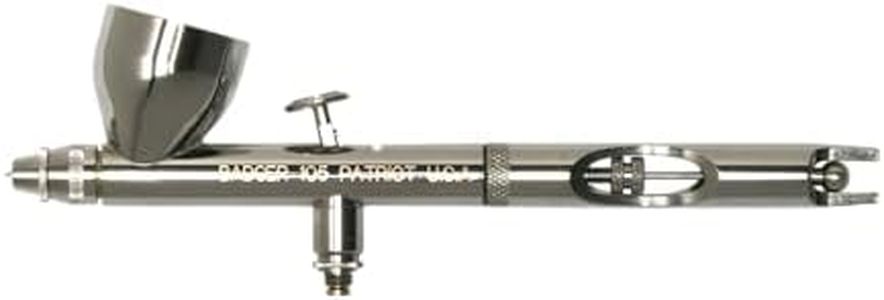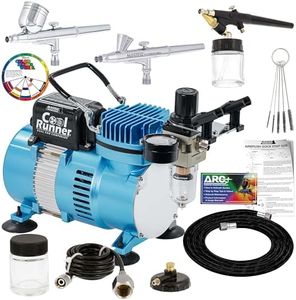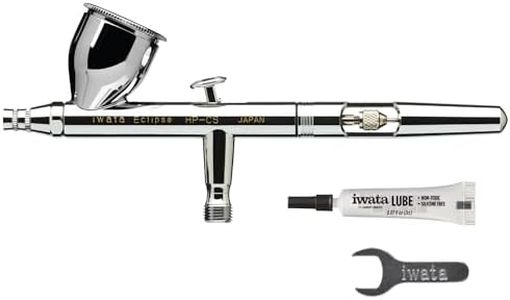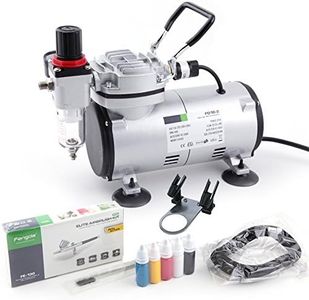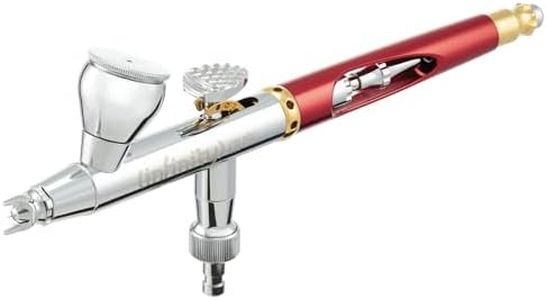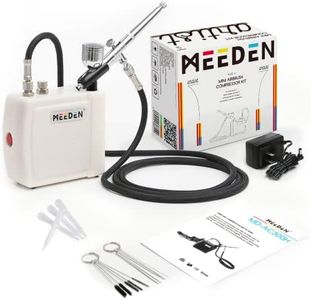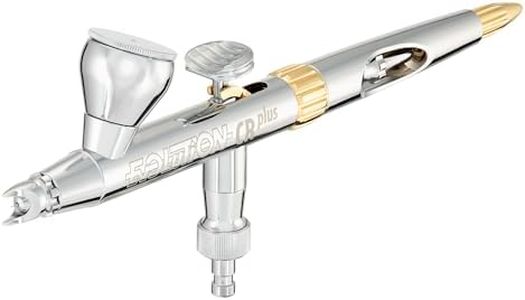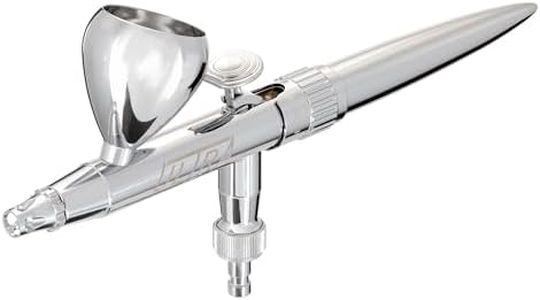We Use CookiesWe use cookies to enhance the security, performance,
functionality and for analytical and promotional activities. By continuing to browse this site you
are agreeing to our privacy policy
10 Best Airbrush Kits
From leading brands and best sellers available on the web.Buying Guide for the Best Airbrush Kits
Choosing the right airbrush kit can make all the difference, whether you are painting models, doing makeup, cake decorating, or working on art projects. To find the best fit, consider what you’ll use the kit for and how experienced you are. Pay attention to specs like airbrush type, compressor power, nozzle size, and the extras included, as these will help you get the results you want and make your airbrushing experience enjoyable and productive.Airbrush TypeThe type of airbrush—single-action or double-action—refers to how you control the flow of air and paint. Single-action airbrushes only require you to press down for air, and the paint flow is set independently, making them simple to use and great for beginners or jobs that need consistent spray patterns. Double-action airbrushes let you control both air and paint by pressing and pulling on the trigger, allowing for finer detail and more versatility, but they require more practice. If you want easy operation, start with single-action; for more intricate work and control, go for double-action.
Compressor Power and FeaturesThe compressor is what powers the airbrush by providing compressed air. When looking at compressors, check the air pressure they deliver, usually measured in PSI (pounds per square inch). Lower PSI (10–20) is useful for delicate work like makeup or nail art, while higher PSI (20–40) handles thicker paint and larger surfaces. Some compressors offer adjustable pressure, which means more flexibility for different projects. Also, consider whether the compressor is quiet if you are working in a shared or home environment.
Nozzle SizeNozzle size determines how fine or broad your spray pattern will be, measured in millimeters. Fine nozzles (0.2–0.3mm) are best for detail work such as illustrations, miniature models, or intricate designs. Medium size (0.3–0.5mm) provides a balance for both detail and base coverage, suitable for general tasks. Larger nozzles (0.5mm and above) handle thicker paints and cover larger areas, such as base coats or spraying backgrounds. Pick a nozzle size that matches the type of work you plan to do—smaller for details, larger for coverage.
Gravity Feed vs. Siphon FeedAirbrushes use either gravity feed (cup on top) or siphon feed (bottle underneath) to deliver paint. Gravity feed works with lower air pressure, making it ideal for fine detail and using less paint, while siphon feed holds more paint and is better for bigger projects. If you want easy cleanup and are focusing on detailed or color-changing work, gravity feed is a good choice. If you often spray large areas or need to use a lot of paint at once, siphon feed may suit you better.
Extras and AccessoriesSome airbrush kits come with extra items like cleaning brushes, hoses, different needles and nozzles, or paint bottles. These additions can make using and maintaining your airbrush much easier. If you’re just starting out, a bundle with cleaning tools and multiple parts helps you keep your kit running smoothly and lets you try different spray patterns without buying more separately. More experienced users may already own some accessories, so focus on what you truly need.
